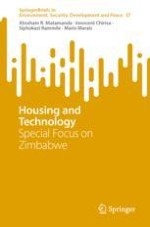The housing and human settlement sector is fast changing, and technology is making it more complex than ever before. With reference to Zimbabwe, a developing country in Southern Africa, the essence of this book is to bring out housing as an issue within the technology debate and practice. The following themes emerge from the 6 chapters in the book:
• The characterisation and conceptualisation of housing and technology and the nexus of both
• The complexity of housing challenges and the problems governments face in providing adequate housing, especially for the poor
• Diverse practices in housing construction through the application of different typologies of technology
• Assessment of the feasibility of technologies in housing development in Zimbabwe by mirroring them against global experiences.
• Discussion of alternative policy approaches that may guide technology integration in housing development.
This book will excite scholars and practitioners in urban and development studies, construction project management, urban sociology, geography, real estate together with policymakers and government officials.
